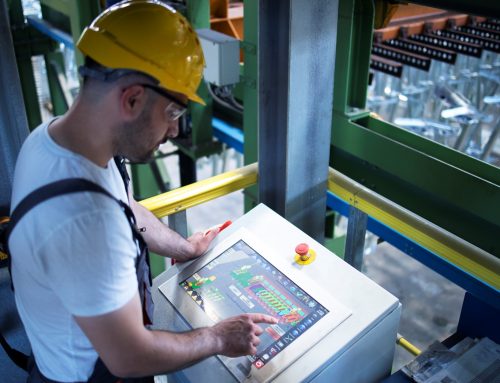Learn how to develop an efficient maintenance plan to extend the lifecycle of your assets and improve production. Check out these tips!
Is the lifecycle of your business assets meeting expectations? Did you know that a preventive maintenance plan can prolong the durability of your equipment? In addition to preventing failures, downtime, and accidents, it also contributes to increasing the lifespan of your equipment and optimizing your resources.
Now is the time to delve deeper into this relationship. Discover how a maintenance plan can bring clear benefits to the performance of your equipment over time and how the use of management software can be your greatest ally in this process. Curious? Then keep reading and find out more!
What is a maintenance plan and why is it important?
A maintenance plan is a document that outlines the activities, procedures, resources, and deadlines required to ensure that your assets are always in good working condition. It can be divided into different types, such as preventive, predictive, corrective, and proactive, depending on the objective and adopted strategy.
How can a maintenance plan help extend the equipment lifecycle?
One way to ensure that equipment is always in optimal condition is through a maintenance plan. This document defines the activities, procedures, resources, and deadlines needed to preserve and restore the equipment.
A well-developed maintenance plan can:
- ● Prevent issues that may compromise the operation and quality of the equipment.
- ● Reduce costs associated with repairs, replacements, and production losses.
- ● Increase equipment availability and reliability.
- ● Improve equipment efficiency and performance.
Let’s consider a practical example to illustrate this. Suppose you have a machine that produces 100 pieces per hour and cost $100,000. The estimated lifecycle of this machine is 10 years, meaning it should operate for 87,600 hours before needing replacement.
If you don’t perform any maintenance on this machine, it may experience failures, downtime, wear and tear, and efficiency losses over time, reducing its lifecycle and productivity.
On the other hand, if you perform a check-up every 6 months, replacing worn-out parts, lubricating components, cleaning filters, and adjusting parameters, you can increase the machine’s lifecycle by 20%. That means it can operate for 105,120 hours before needing replacement.
This translates to savings of $20,000 on purchasing a new machine, as well as an increase in production by 17,520 hours, which equals an additional 1,752,000 pieces. Additionally, you can also reduce costs related to repairs, quality losses, and accidents.
How can management software assist your maintenance plan?
Management software is a tool that facilitates and streamlines the entire process of developing, executing, and monitoring your maintenance plan. With it, you can:
- ● Integrate all asset information into a single platform.
- ● Automate routines and communications for your maintenance team.
- ● Generate custom reports and graphs on asset performance.
- ● Access real-time data from anywhere.
- ● Make more informed and data-driven decisions.
An example of management software that can assist your maintenance plan is Manusis4. It is a comprehensive and integrated solution that allows you to manage all aspects of asset management.
Don’t forget that teams, reports, and analysis are fundamental elements in developing maintenance plans. They ensure that the maintenance plan achieves the proposed objectives and brings benefits to the company.
A maintenance plan is essential for ensuring the lifecycle of your assets and improving production. It requires constant planning, organization, execution, and control. And to facilitate this work, nothing is better than relying on management software like Manusis4. If you want to learn more about how Manusis4 can assist your maintenance plan, request a free demonstration right now!






Leave A Comment